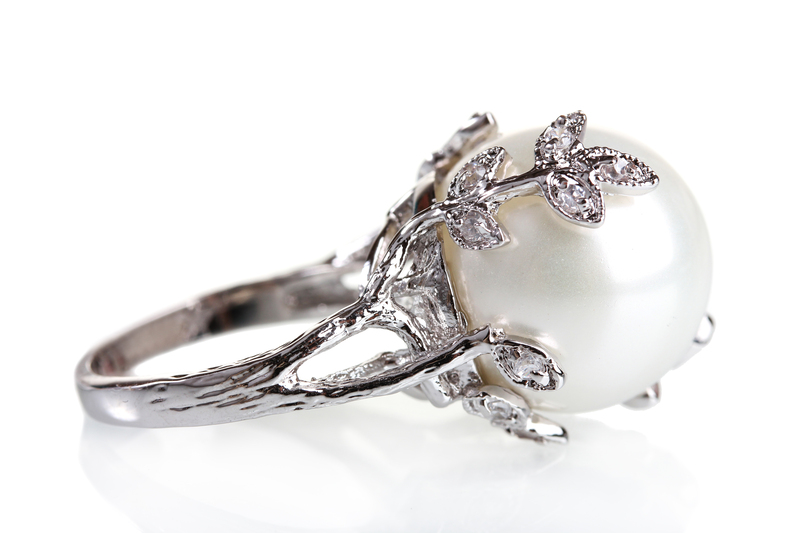Grease Be Gone: Crystal-Clear Guide for Enamel Oven Tray Cleaning
Posted on 19/06/2025
Grease Be Gone: Crystal-Clear Guide for Enamel Oven Tray Cleaning
Are you staring at your oven's enamel trays, wondering how to banish those stubborn, baked-on grease stains? You're not alone! Cleaning enamel oven trays can seem like a daunting task, but with a little guidance, your trays can shine like new. This in-depth article will walk you through various methods, tips, and tricks for enamel oven tray cleaning. Say goodbye to grime and hello to sparkle!
Why Clean Enamel Oven Trays Regularly?
If you enjoy freshly baked meals or roasted delights, you know the value of a pristine cooking surface. Enamel oven trays are popular for their non-stick, durable nature, but they can attract grease quickly. Regular cleaning ensures:
- Better-tasting food - Old grease can impart unwanted flavors.
- Longer tray lifespan - Residue can break down enamel over time.
- Improved oven efficiency - Heat circulates more evenly.
- Safer cooking - Built-up grease can cause smoke or fire hazards.
*Pro Tip: Wiping trays after each use prevents heavy build-up and saves you time during deep cleaning sessions!

Understanding Your Enamel Oven Tray
Before diving into methods for grease removal and cleaning, it's crucial to know your tray. Enamel-coated trays feature a smooth, glass-like finish over metal, making them non-reactive and highly durable. However, harsh scrubbing or abrasive chemicals can damage the coating and compromise its performance.
Common Causes of Tricky Grease Buildup
- High-heat Roasting: Fats melt and splatter, cooling into sticky residue.
- Food Drippings: Sauces, oils, and marinades drip and bake onto the tray.
- Repeated Use Without Cleaning: Over time, gluey layers of fat harden on the surface.
Identifying these common culprits is the first step in proactive cleaning and grease prevention!
Essential Tools and Supplies for Enamel Tray Cleaning
Gathering the right supplies makes the enamel oven tray cleaning process efficient and safe. Here's what you'll need:
- Soft sponge or cloth (avoid steel wool!)
- Baking soda (a gentle, non-abrasive cleanser)
- Dish soap or mild detergent
- White vinegar
- Warm water
- A plastic or silicone scraper
- Rubber gloves
- An old toothbrush (for crevices and corners)
_Avoid using abrasive powders or metal brushes, as they will scratch and dull your tray's enamel finish._
Step-by-Step Guide: Cleaning Enamel Oven Trays
Step 1: Initial Soaking
Soaking is one of the most effective techniques for loosening baked-on grease and food residue. Here's how:
- Allow the tray to cool after use (never submerge hot enamel in water, as it may crack).
- Fill your sink with warm water and a generous squirt of dish soap.
- Fully submerge the tray, ensuring stubborn spots are underwater.
- Let it soak for 30-60 minutes. For very greasy trays, overnight soaking is even better.
Step 2: Gentle Scrubbing
Once soaked, take a soft sponge and gently wipe away loosened food. For stubborn patches:
- Sprinkle baking soda on greasy areas.
- Add a few drops of water to make a paste.
- Rub gently in circular motions with your sponge or a plastic scraper.
- Rinse thoroughly with warm water and pat dry.
Tip: For edges and tight corners, use an old toothbrush dipped in soapy water.
Step 3: Targeting Stubborn Grease Stains
If stains persist, it's time for a deeper clean. Try this eco-friendly method:
- Mix equal parts baking soda and white vinegar.
- Spread this paste over the greasy spots. Let it fizz and sit for 10-15 minutes.
- Wipe away with a soft cloth, rinse, and dry.
This dynamic duo lifts greasy grime without damaging the enamel's surface.
Step 4: Deodorize and Shine
For extra freshness, spritz a mixture of vinegar and water (1:1 ratio) over the tray after cleaning. Let it air dry for a gleaming, odor-free finish.
Alternative Methods for Enamel Oven Tray Cleaning
In some cases, the standard methods aren't enough. Here are expert solutions for persistent, burnt-on stains:
1. The Baking Soda and Hydrogen Peroxide Method
- Make a paste with 1/4 cup baking soda and 3 tbsp hydrogen peroxide.
- Spread it over the stained area and allow it to sit for 2-3 hours.
- Scrub gently with a sponge and rinse thoroughly.
Note: Hydrogen peroxide is a mild bleaching agent and safe for most enamel surfaces. Avoid regular use to preserve the tray's shine.
2. The Steam-Cleaning Hack
- Fill your dirty enamel tray with hot water and a drop of dish soap.
- Place it in a preheated oven (180?C / 350?F) for 20 minutes.
- Let steam loosen the grease. Cool, then discard water and scrub gently.
Always handle hot trays with care and avoid temperature shocks!
3. Lemon and Salt Scrub for Natural Cleaning
- Cut a lemon in half, dip it in coarse salt, and rub over greasy spots on the tray.
- Let the citrus juice sit for 10 minutes, then rinse thoroughly.
The natural acidity helps dissolve grease, while salt provides safe, gentle abrasion.
Commercial Oven Cleaner: When to Use and How
While homemade enamel oven tray cleaners are effective, some situations demand stronger solutions. If you opt for a commercial oven cleaner:
- Choose products labeled "safe for enamel."
- Always wear gloves and clean in a well-ventilated area.
- Follow manufacturer instructions exactly.
- Rinse thoroughly multiple times to prevent residue.
Warning: Avoid caustic or highly abrasive oven cleaners, as they may etch or crack the enamel coating.
Preventing Grease Buildup on Enamel Trays
1. Use Liners or Parchment Paper
Lining trays before baking makes post-cooking grease removal a breeze. Both parchment and silicone mats offer a non-stick barrier.
2. Wipe Down After Each Use
While the tray is still warm (not hot!), wipe it with a soft, damp cloth to remove fresh grease. This habit dramatically reduces heavy, stubborn build-up.
3. Store Trays Properly
Always store clean and dry enamel trays. Stacking wet trays can lead to moisture stains and trapped grime.
Troubleshooting Common Enamel Oven Tray Issues
- Cloudy or Dull Finish: This can result from abrasive cleaning or water residue. Buff with a vinegar-soaked cloth and rinse.
- Persistent Odors: Sprinkle baking soda, spray with vinegar, and air dry outside.
- Small Chips or Cracks: Avoid further scrubbing and consider replacing trays with extensive enamel damage to maintain food safety.
FAQs: Enamel Oven Tray Cleaning and Grease Removal
Is it safe to put enamel trays in the dishwasher?
Many enamel oven trays are technically dishwasher-safe. However, repeated dishwasher cycles can dull the coating. For a longer life and optimal cleanliness, handwashing is preferred.
Can I use bleach on my enamel-ware?
Bleach can discolor or weaken enamel. Stick with baking soda, vinegar, or mild detergents for best results.
How often should I deep-clean my tray?
A light clean after every use and a deep scrub once every two to three weeks keeps your enamel oven tray gleaming and safe.
What if grease won't budge?
If persistent, try multiple applications of the baking soda paste, or alternate with steam-cleaning. Never use sharp, metal tools to avoid damaging the enamel.
Best Practices to Preserve Your Enamel Oven Tray
- Allow your tray to cool before soaking or washing to avoid thermal shock and cracks.
- Avoid high concentrations of acidic or alkaline cleaners (like ammonia or concentrated vinegar) that can erode the enamel over time.
- Inspect trays regularly for chips, cracks, or warping to ensure safe, even cooking.
- Dry your tray completely before storing to prevent mineral spots and corrosion.
Eco-Friendly and Safe Cleaning Alternatives
For those seeking green cleaning solutions, you can avoid commercial chemicals while keeping your enamel oven tray sparkling:
- Baking Soda: Natural deodorizer and gentle abrasive.
- White Vinegar: Dissolves grease and neutralizes odor.
- Lemon Juice: Cuts through fat and leaves a fresh scent.
- Salt: Adds texture for scrubbing.

Conclusion: Enjoy Your Crystal-Clear, Grease-Free Enamel Oven Tray!
A spotless tray isn't just visually pleasing--it's safer, healthier, and elevates every meal you bake or roast. With our comprehensive guide to grease removal and enamel oven tray cleaning, you'll find it's simpler than ever to keep your kitchen essentials in pristine condition. Remember: gentle, regular maintenance is key. Happy cleaning, and may your oven trays stay crystal-clear and grease-free!
Key Takeaways for Enamel Tray Shine
- Soak, scrub with soft tools, and rinse after every use.
- For tough stains, baking soda and vinegar work wonders.
- Safeguard the enamel finish--avoid harsh abrasives and chemicals.
- Prevention is easier than deep cleaning; use liners and wipe trays promptly.
With these expert-backed tips, grease be gone--and your enamel oven trays will be as good as new!





